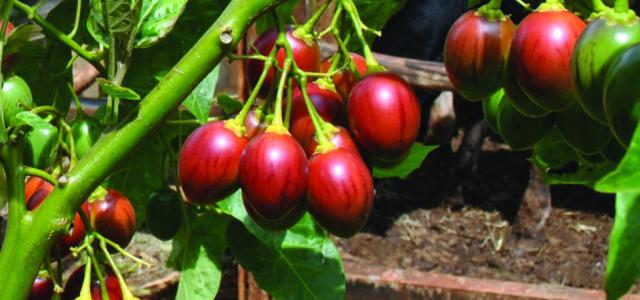There are very few farmers who grow tree tomatoes for the market. Tree tomatoes are easy to grow, resistant to diseases and in great demand. Tree tomato is a small, half woody plant with shallow roots. It grows to an average height of 3.5 – 5.0 m depending on the variety.can you imagine;
1.Tree tomatoes seedlings goes for ksh.400
2.It takes a tree tomatoes 18 months to mature
3.A kilo of tree tomatoes fetches between ksh.100 and ksh.150
Climatic condition needed for tree tomatoes farming.
The fruit tree prefers well-drained soils and grows best in climates with long hours of sunlight. In hot and dry climates, the trees may require shade to maintain adequate moisture in the soil.
The tree tomato does not tolerate tightly compacted soil since it needs well-aerated soil. The soil must be fertile and light in texture and rich in organic matter. Good drainage is necessary since water logged soils can kill the plants. Tree tomatoes cannot survive in areas with prolonged drought. They must have ample water during the dry season.The best way to retain moisture in a tree tomato plantation is to apply mulch, which also reduces weed growth.
Steps followed during tree tomatoes farming.
1.Propagation.
Tree tomatoes can be grown from seeds or cuttings. Seeds produce trees with more branches that are erect tree and ideal for sheltered locations. Cuttings develop into shorter bushy plants with low-lying branches, suitable for growing in areas prone to wind or areas without protection from wind. Transplanting can be done at 6 weeks.
2.Planting.
Dig holes measuring by feet, put the top soil on one side and the subsoil on the other. The distance from one plant to the next should be 4 feet and space between one row and the next should be 5 feet. Mix one and a half wheelbarrow of well-prepared compost (chickens and pig manure are preferred) with two spadefuls of topsoil to plant the seedlings. Leave a shallow depression in every plant for placing the mulching material – only 1 feet of the tree tomato seedling should be buried while planting just enough to cover the root hairs. Selection of planting site is very important; tree tomatoes do well when planted on land that has not had any crop for two or three seasons. An acre can accommodate about 1200 trees.
3.Fertilization.
To maintain a healthy growth, tree tomatoes require continuous fertilization. Mix farmyard manure with water and apply as slurry and apply in the shallow depression around the plant once every two months.
4.Diseases and pest control.
Tree tomato is fairly resistant to most diseases and pests. However, the tree is prone to powdery mildew, which causes the leaves to fall off. Application of copper oxychloride (allowed in organic farming) can control the disease. Neem extracts can also be used to control the disease. The main pests that attack the tree include the aphids, thrips whiteflies and nematodes. Pests can be prevented by continuous application of plant extracts (chilies, African marigold, garlic, neem) at least three times a week. Good field sanitation also controls pests and diseases.
Seedlings are pruned back the first year after planting to a height of 3 to 4 feet (0.9- 1.2m) to encourage branching. In plantations, tree tomatoes reach a height of not more than 1.50m. Annual pruning thereafter is advisable to eliminate branches that are no longer fruiting. New shoots close to the main branches should be allowed to grow so that the tree does not develop a broad top with fruits on the outer edges, which are prone to wind damage.
5.Varieties.
The main varieties grown in Kenya are the Goldmine, Inca red, Rothamer, Solid gold and Ruby red. New varieties being introduced into the country give better yields and a shorter growing period.
6.Yield.
New varieties can produce up to 800 fruits per tree every year under good management. The current price for one fruit is Ksh.10.








